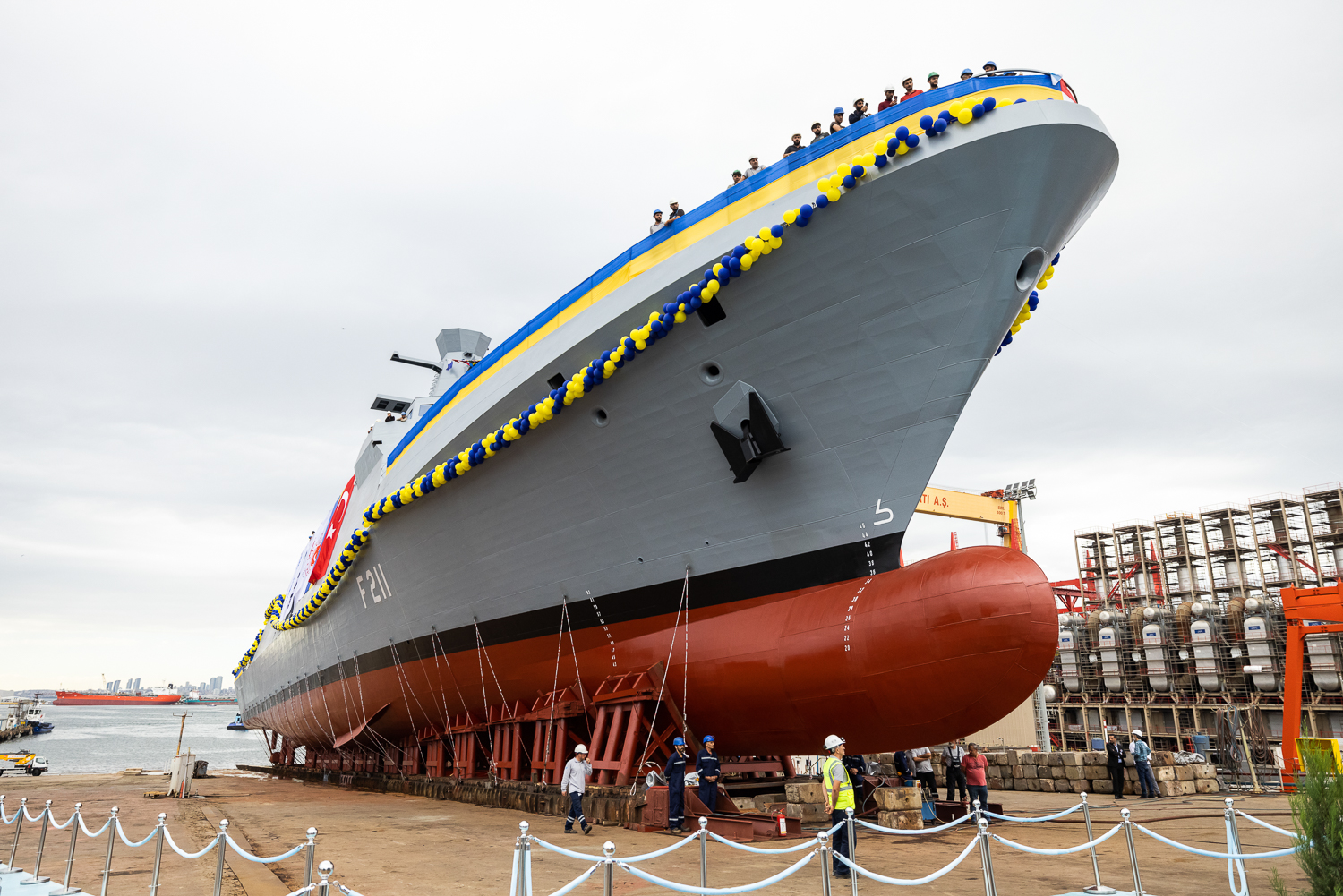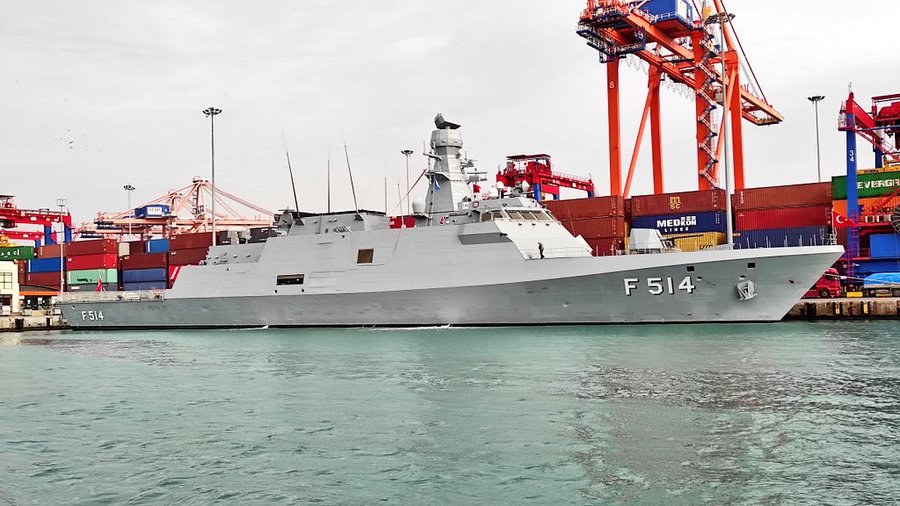
The future flagship of the Ukrainian Navy corvette Hetman Ivan Mazepa is going to join the fleet of Ukraine in 2024. Militarnyi has previously reported about this.
Today we’re telling the history of the MILGEM project, the characteristics and weapons of the Ada-class corvette, the Ukrainian contract, and its challenges.
The MILGEM project is Turkey’s national warship program that is funded by the country’s Navy. The project is expected to create multi-purpose corvettes and frigates that can perform reconnaissance, anti-submarine defense, early warning tasks, support amphibious operations, and counteract air threats.
In the mid-1990s, the Turkish Navy began researching the production facilities and technology needed to create a domestic corvette.
The vessel was supposed to increase the operational capabilities of the Turkish Navy in the coastal zone, provide effective anti-submarine defense, and improve the potential of the national naval industry.
The new defense program, which was approved in 1996, defined the MILGEM project as part of the national military development program.

In 2004, the Istanbul Naval Shipyard Command established a project bureau to carry out and coordinate design, engineering, and construction work.
The Bureau’s specialists focused on the construction of a modern warship for littoral areas with good anti-submarine capabilities, the ability to patrol on the open sea with modern reconnaissance means.
On July 26, 2005, the Turkish industry began construction of the first vessel of the MILGEM project, the Heybeliada corvette.

The vessel was launched on September 27, 2008, and put into the Turkish Navy on September 27, 2011.
Today, the project has three types of ships: Ada, ТF-100, ТF-2000.
The Ada-class anti-submarine corvette is the base vessel of the MILGEM project. The corvette is visually similar to the American Freedom-class littoral combat ship.
The corvettes of the Turkish project have the advantage in weapons, radar, and sonar systems, and the advantage of Freedom – in higher speed and modular design.
In Turkish, “Ada” means island, and this principle is reflected in the naming of ships of this type. Each vessel is named after Turkish islands.
As of today, six Ada-class corvettes have been constructed: four for the Turkish Navy, one for the Ukrainian Navy, and another for the Pakistani Navy.
Pakistan plans to build three more ships, while Ukraine plans to build one more, although earlier there were plans for the construction of two ships at the Okean Shipyard.
The corvette is equipped with the GENESIS (Gemi Entre Savaş İdare Sistemi) system made by Havelsan company. The system was first developed for the equipment of the G-class frigate, the Turkish version of the American Oliver Hazard Perry-class frigate.
The vessel has an internal sonar developed by the Scientific and Technological Research Council of Turkey and manufactured by STM ONUK-BG Defense Systems. The sonar uses the technology of nano-enhanced Fiber Reinforced Polymer.
Communication systems, laser warning systems, and electronic optical sensors are manufactured by Aselsan.

In addition, Aselsan supplies ARES-2N radar, which provides wide-band space scanning and target direction finding.
Another product of Aselsan is the ALPER tactical radar.
A SMART-S MK2 3D radar is used to detect aerial targets, and a Thales Sting EO MK2 radar is used to control fire.
The ship uses OSI Geospatial’s High Precision Electronic Map Navigation System (ECPINS).
The Integrated Platform Management System (IPMS) from STM Yaltes JV controls the machinery, auxiliary systems, power generation, and distribution.
In addition, the system can detect a fire ,start automatic firefighting, and monitor damage to the ship.
The ship is moving due to the German-made RENK CODAG Cross-Connect propulsion gear.
It consists of a 31,000 horsepower gas turbine and two 5,790 horsepower diesel engines.
Each diesel engine drives one variable-pitch propeller through a two-speed main gearbox.
The cross-connected mechanism distributes power from the gas turbine through both main gearboxes to two shafts.
The vessel can operate in diesel mode on a single gas turbine or in CODAG mode. In CODAG mode, diesel and gas turbine engines provide a combined 38,800 horsepower.
A Super Rapid 76mm ship’s artillery mount, manufactured by the Italian company OTO Melara is installed on the bow of the ship.
The installation has a rate of fire of 120 rounds per minute. The effective range of fire declared by the manufacturer is about 16 kilometers, and the muzzle velocity of the projectile is 915 meters per second.

The gun has a wide range of rounds, including a standard high-explosive, multi-purpose MOM, a PFF anti-missile projectile, with proximity fuze and tungsten balls embedded in the shell for defined fragmentation effect, a SAPOM semi-armour piercing, a DART guided projectile for anti-aircraft and anti-missile manoeuvering targets, and a VULCANO guided projectile with a range of up to 40 kilometers.
STAMP 12.7mm remote controlled modules from Aselsan are installed on the sides of the ship.

Anti-ship weapons are represented by two launchers of Harpoon or Atmaca missiles, for a total volley of eight missiles.
Anti-aircraft defense is provided by RIM-116 anti-aircraft missiles in Mk 49 launchers, the total volley consists of 21 missiles.
The vessel is armed with Mk 46 torpedoes, which are housed in two twinned Mk 32 torpedo mounts.
The corvette, with a displacement of 2,400 tons, has a length of 99.5 meters, a width of 14.4 meters, and a draft of the vessel – 3.6 meters.
It’s speed is 29 knots, the range reaches up to 5,632 kilometers, and endurance – 21 days with logistic support and 10 days in autonomous mode.
The crew consists of 93 people, with an additional 13 people available on board.
The ship can also accommodate a S-70B Seahawk anti-submarine helicopter.
According to CNN Türk, since 2008, Pakistan, Bangladesh, a number of South American countries, Ukraine, and even Canada have shown an interest in the corvette.
On April 6, 2011, Indonesia and Turkey signed an agreement on cooperation in the defense industry, which included the construction of two Ada-class corvettes for the Indonesian Navy.
On July 5, 2018, a Turkish shipbuilding company won a bid to build four Ada corvettes for the Pakistan Navy.

Turkish Defense Minister Nurettin Canikli called the contract “Turkey’s biggest defense export in one deal.”
By September 2018, several details had emerged that corvettes for the Pakistan Navy would have a CODAD propulsion system instead of CODAG, increasing operation in autonomous mode from 10 to 15 days.
During IDEAS 2018, representatives of the Pakistan Navy said that the fourth ship would be fully designed and built in Pakistan and would be the first Jinnah-class frigate.
Thus, the fourth ship will give a start to a new series of frigates based on the Turkish MILGEM project.
In December 2020, Ukraine and Turkey quite unexpectedly concluded a framework agreement for the construction of Ada-class corvettes, which provided for the localization of construction at Ukrainian enterprises.
In July 2021, more details regarding the deal emerged. In 2021, UAH 3.8 billion was provided for financing the project.
At the same time, it was reported that the cost of one vessel was almost UAH 7 billion.
It was planned that two corvettes would be built by Turkey and finished in Ukraine. There was also information that Ukraine was interested in building two more corvettes completely on Ukrainian territory.

It was planned that the first hull of the corvette would be completed at the Ukrainian shipyard by the end of 2023.
At the same time, the Ministry of Defense of Ukraine had plans to install on a ship’s board a naval version of the Мі-2 helicopter, which was supposed to be developed by the Motor Sich enterprise.
“By 2023 – the creation of a helicopter for the corvette, involving the installation of a mechanism for the blades’ folding, so that it can fit in the hangar of the ship. It is supposed to be performed in two versions – search & rescue, and anti-submarine,” said Deputy Minister of Defense of Ukraine Oleksandr Mironyuk.
It is known that the Turkish side chose the Okean Shipyard in Mykolaiv as a Ukrainian contractor.
A ship’s laying ceremony was held on September 7 of the same year. The construction was very fast. On September 14, the Commander of the Ukrainian Navy, Rear Admiral Oleksii Neizhpapa, said that almost 13 sections and the keel of the ship were formed, and by April 2022, all sections were supposed to be ready.

The nomenclature of the corvette’s armament was still not disclosed.
In December 2021, information appeared that the Turkish shipbuilding company had begun to compose the hull of the future corvette.
After the start of a full-scale invasion by Russian troops, there was a prolonged absence of any news or updates regarding corvettes. In August, by decree No. 586/2022, the first ship was named “Hetman Ivan Mazepa.”
“In order to restore the historical traditions of the national army, perpetuate the memory of the outstanding Ukrainian statesman of the Hetman of Zaporizhzhya Army Ivan Mazepa, I decide:
To assign the Ada-class corvette of the Ukrainian Navy the name of Hetman Ivan Mazepa and to further name this corvette – the corvette “Hetman Ivan Mazepa,” the document said.
On October 2, 2023, with the participation of the First Lady of Ukraine, Olena Zelenska, and Vice Admiral Oleksii Neizhpapa, a corvette launching ceremony was held.

The issue of armament for the Ukrainian corvette, according to open sources, was not finally resolved at that time.
Neptune, Harpoon, NSM, and Atmaca were considered anti-ship missile weapons.
For anti-aircraft weapons, the French naval VL MICA SAM was discussed. The corvette’s artillery armament should consist of an OTO Melara Super Rapid 76mm gun and a Millennium 35mm gun. The Murene 90 Impact was considered a torpedo.
In March 2023, it became known that metal had been cut for the second, so far unnamed, corvette.
In general, the contract was criticized because of the fact that the purchase of two corvettes at the present stage of the development of the Ukrainian Navy could cause more harm than good.
The main problem was cost. One ship cost almost UAH 7 billion, and this amounted to 30% of the entire budget for defense purchases.
“It’s just very expensive. Astronomical figures for Ukraine. And most importantly, we already had a fleet development program – a mosquito fleet of missile boats. I want to emphasize that we had a concept of development, and funds were already allocated for this. Obviously, our response at sea should be asymmetrical. But corvettes are something that we came up with ourselves, something we think we need,” said Taras Chmut in an interview with Focus magazine.
The second issue is that the purchase of ships of this class contradicts the Development Strategy of the Ukrainian Navy, which envisaged the procurement of corvettes for the exclusive control of the maritime economic zone in 2025-2030.
The third problem is the delivery of the ship to the base point and its deployment there. Such a ship will immediately become the number one target for the Russians. Attempts to destroy or damage the ship may be immediately upon entering the territorial waters of Ukraine.
The ship will also not be able to confidently operate outside the home base due to the constant threat from the Russian fleet, coastal missile systems and aviation.
To counteract the enemy’s means of defeat requires training and coherence of the ship’s command, which is achieved by frequent exercises, which, according to known information, except for internships and ships of the Turkish Navy, were not carried out.
The corvette can complement the air defense of the home base as a means of detecting and defeating air targets.
It also raised and still raises questions about the armament of the corvette, there is still no official and clear information about it.
Підтримати нас можна через:
Приват: 5169 3351 0164 7408 PayPal - [email protected] Стати нашим патроном за лінком ⬇
Subscribe to our newsletter
or on ours Telegram
Thank you!!
You are subscribed to our newsletter